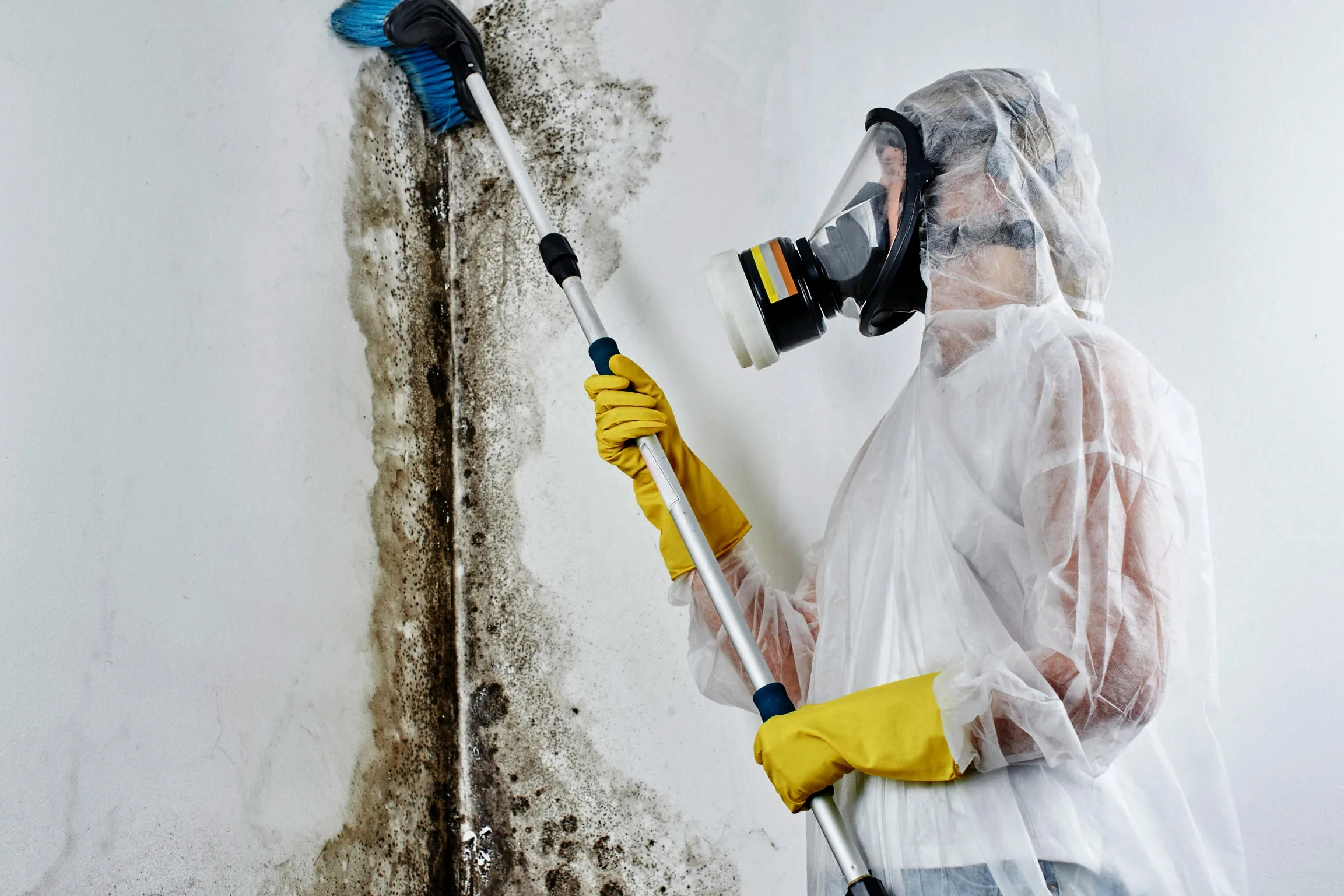At Prestige NW Restoration, we’ve seen the full scope of what water damage can do. We’ve walked through homes where the air carries the unmistakable trace of mold spores. We’ve lifted floorboards only to find hidden bacterial growth slowly weakening the foundation. These problems don’t begin overnight they thrive in the aftermath of unresolved moisture. That’s why microbial restoration isn’t just a cleanup task it’s preventive care for your home’s future.
When people ask how they can stop water damage from returning, they’re often not thinking about what grows in the dark corners left behind. Microbial restoration targets the organisms that love damp environments mold, bacteria, mildew and eliminates them before they turn into full-blown infestations that degrade materials, compromise indoor air quality, and trigger health concerns.
This guide is built around the knowledge and field experience our team brings to every restoration project. We’re sharing exactly how microbial restoration works to prevent future water damage issues and what you can do to protect your home or property long-term.
Why Moisture Isn’t the Only Problem
Water damage often leaves more behind than just warped wood or stained drywall. It creates a breeding ground for microbial growth tiny organisms that work silently but destructively if ignored.
When water enters a home, whether from a burst pipe or a slow leak behind a wall, the visible damage is only part of the problem. Microorganisms such as mold spores and bacteria begin multiplying in as little as 24–48 hours. Without addressing this hidden threat, simply drying the space isn’t enough.
Our team has responded to cases where homes were treated for water damage but microbial growth was overlooked. Months later, drywall had to be replaced, floors ripped up, and families displaced again problems that could’ve been avoided with proper microbial restoration the first time.
Moisture Traps Are Microbial Hotbeds
Common areas like insulation, behind cabinets, and under flooring often retain moisture well after visible surfaces seem dry. These pockets create ideal conditions for mold and bacteria. Our moisture mapping process pinpoints exactly where these zones are, and our remediation strategy ensures no microbe-friendly area is left untreated.
Why Standard Drying Doesn’t Cut It
Typical drying methods focus on removing water but not eliminating microbial risks. Our process includes antimicrobial applications, HEPA filtration, and targeted demolition if necessary to stop growth at its source. Without these steps, water damage may return this time carrying a biological footprint.
The Role of Microbial Restoration in Long-Term Damage Prevention
Microbial restoration goes far beyond mold removal. It safeguards structures, maintains air quality, and helps ensure past water events don’t become future crises.
We often see homeowners surprised when their water damage “comes back.” It usually hasn’t—it was never fully resolved. Microbial growth degrades materials over time, leading to rot, odor, and even structural weakness. Proper microbial restoration halts this slow decay.
How We Interrupt Microbial Life Cycles
Microbes survive by attaching to surfaces and reproducing rapidly in moist, dark spaces. Our treatment interrupts their cycle at multiple stages—drying the area completely, applying safe antimicrobial agents, removing contaminated materials, and verifying clean air and surfaces with advanced testing.
Long-Term Health and Property Value Benefits
Clients who invest in full microbial restoration see longer-lasting repairs, fewer repeat issues, and greater confidence in their indoor environment. They avoid the recurring costs that come with hidden mold problems or compromised framing. For landlords and property managers, it also supports tenant health and reduces liability.
Where Microbial Growth Hides and How We Find It
Microbial colonies aren’t always easy to see. They’re often behind walls, inside vents, or under surfaces. That’s why thorough inspection and testing matter.
We combine infrared thermal imaging, moisture meters, and air sampling to detect problem areas early. In many cases, this has allowed us to act before visible mold ever appeared, saving thousands in potential repairs.
The Importance of Early Detection
We recently worked with a family whose toddler had persistent respiratory issues. Our inspection found microbial contamination behind baseboards in their child’s room—an area affected by a minor leak months earlier. Catching it early avoided both major health impacts and a costly remodel.
How Our Inspection Process Works
Each job starts with a comprehensive assessment of both visible and hidden damage. We check humidity levels, take microbial samples, and map out moisture-prone areas. Then we design a tailored response that focuses not just on restoration but prevention.
Microbial Restoration During the Water Damage Response
The most effective time for microbial restoration is immediately following water intrusion. That’s when action can stop future issues before they start.
If our team is called in right after a pipe burst or flood, we integrate microbial restoration from the beginning. That includes drying, microbial decontamination, and protective sealing.
Integrated Services vs. Delayed Remediation
When microbial work is delayed or separated from water cleanup, issues compound. Surfaces that seem dry may be harboring spores that reappear weeks later. Our integrated approach prevents this by addressing all elements at once.
The Right Sequence Matters
Removing water, removing microbes, then rebuilding in a clean and dry environment—that’s the only way to prevent recontamination. We’ve developed processes that ensure this sequence is followed every time.
How Homeowners Can Support Microbial Prevention
Even with professional intervention, there are steps homeowners can take to reduce future risk. We encourage all our clients to stay proactive.
Watch for condensation, maintain your HVAC system, and keep humidity below 60% in all rooms. After any leak or water event, don’t assume the area is fine once it “looks” dry. If you’re unsure, call us. A quick moisture check can prevent long-term damage.
Why We Educate Every Client
Part of our job is making sure you understand what happened and what to look for in the future. That’s why every service includes a walk-through and discussion about what caused the damage, how it was resolved, and how to monitor the area moving forward.
What to Do if You Suspect Mold
Don’t wait. If you see spots, smell mustiness, or experience allergy-like symptoms in one area of your home, call us. We’ll conduct a fast assessment and let you know if microbial restoration is needed.
Your Path to a Safer, Healthier Home Starts Here
Understanding microbial restoration isn’t just about knowing what’s behind the walls—it’s about knowing what’s next. Every decision we make at Prestige NW Restoration is about preserving your home, protecting your health, and preventing repeat damage.
If you’ve dealt with water damage before, or if you’re trying to make sure it doesn’t happen again, we’re ready to help. We’ve been in crawlspaces, attics, behind cabinets—wherever microbes hide, we go, and we get it done right.
Let’s stop the cycle before it starts.
Call Prestige NW Restoration today at (360) 334-3624
Email us at dispatch@prestige-nw.com
We’re here when you need us—experienced, thorough, and always ready to protect what matters most.
Still Curious? Let’s Dive Deeper with Prestige NW Restoration
Q1: How does microbial restoration differ from standard mold removal?
Microbial restoration is more comprehensive. We eliminate all forms of microbial growth—mold, bacteria, mildew—and address both visible and hidden contamination, ensuring the space is fully safe and future-resistant.
Q2: Can microbial growth really come back if treated once?
Yes, if moisture isn’t fully removed or areas are missed, spores can linger and regrow. That’s why our process includes follow-up testing and deep-dry verification.
Q3: How fast should I respond after water damage?
Immediately. Microbial growth begins within 24–48 hours. The sooner we’re onsite, the more effective and less invasive the treatment.
Q4: Is microbial restoration safe for kids and pets?
Absolutely. We use environmentally responsible products and methods that are safe for all occupants.
Q5: Will insurance cover microbial restoration?
It depends on your policy and the cause of the damage. We work directly with adjusters to provide clear documentation that supports your claim.
Q6: What’s included in your microbial restoration service?
Inspection, containment, removal of contaminated materials, antimicrobial application, HEPA filtration, final testing, and post-service guidance.
Q7: Can I do any of this myself?
Small areas might seem manageable, but without proper containment, spores can spread. Professional intervention ensures full removal and prevention.
Q8: How do I know if I have hidden microbial growth?
Signs include musty odors, allergy symptoms, past water damage, or visible spotting. We can run diagnostic tests to confirm or rule it out.
Q9: Do you offer emergency service?
Yes. Call (360) 334-3624 any time, and we’ll get a crew out to assess and stabilize the situation immediately.
Q10: What happens after microbial restoration is complete?
We conduct a final walkthrough, explain the results, and provide you with documentation and tips for long-term prevention.




